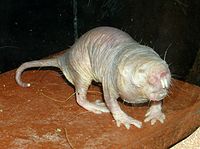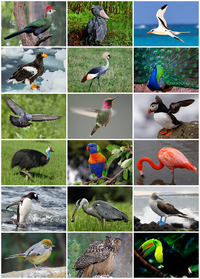
Cooperatively breeding banded mongooses do not avoid inbreeding through familiarity-based kin recognition
Sign Up to like & getrecommendations! Published in 2021 at "Behavioral Ecology and Sociobiology"
DOI: 10.1007/s00265-021-03076-3
Abstract: In species that live in family groups, such as cooperative breeders, inbreeding is usually avoided through the recognition of familiar kin. For example, individuals may avoid mating with conspecifics encountered regularly in infancy, as these… read more here.
Keywords: familiarity; breeding banded; inbreeding avoidance; banded mongooses ... See more keywords

Visual threat signals influence social interactions in a cooperatively breeding fish
Sign Up to like & getrecommendations! Published in 2019 at "Animal Behaviour"
DOI: 10.1016/j.anbehav.2019.03.018
Abstract: Many animals use visual signals to indicate their aggressive intentions. While much research has focused on these signals as predictors of an individual's behavioural motivations, how these social signals are perceived by others and whether… read more here.
Keywords: signals influence; social interactions; facial bars; threat ... See more keywords

Non-invasive assessment of glucocorticoid and androgen metabolite levels in cooperatively breeding Damaraland mole-rats (Fukomys damarensis).
Sign Up to like & getrecommendations! Published in 2018 at "General and comparative endocrinology"
DOI: 10.1016/j.ygcen.2018.05.018
Abstract: Dominant females of cooperative breeding species often use aggression to suppress reproduction of subordinate females, resulting in subordinates experiencing stress-related increases in glucocorticoid levels, which may cause reproductive down-regulation. This would suggest a general pattern… read more here.
Keywords: damaraland mole; mole rats; cooperatively breeding; androgen ... See more keywords

Direct benefits explain interspecific variation in helping behaviour among cooperatively breeding birds
Sign Up to like & getrecommendations! Published in 2017 at "Nature Communications"
DOI: 10.1038/s41467-017-01299-5
Abstract: Kin selection theory provides one important explanation for seemingly altruistic helping behaviour by non-breeding subordinates in cooperative breeding animals. However, it cannot explain why helpers in many species provide energetically costly care to unrelated offspring.… read more here.
Keywords: breeding birds; direct benefits; helping behaviour; variation helping ... See more keywords

Helpers don’t help when it’s hot in a cooperatively breeding bird, the Southern Pied Babbler
Sign Up to like & getrecommendations! Published in 2023 at "Behavioral Ecology"
DOI: 10.1093/beheco/arad023
Abstract: Cooperative breeding, where more than two individuals invest in rearing a single brood, occurs in many bird species globally and often contributes to improved breeding outcomes. However, high temperatures are associated with poor breeding outcomes… read more here.
Keywords: helpers help; incubation; southern pied; cooperatively breeding ... See more keywords

Nest predation predicts infanticide in a cooperatively breeding bird
Sign Up to like & getrecommendations! Published in 2019 at "Biology Letters"
DOI: 10.1098/rsbl.2019.0314
Abstract: In cooperatively breeding species, social conflict is typically assumed to underlie destructive behaviours like infanticide. However, an untested alternative hypothesis in birds is that infanticide in the form of egg tossing may simply be a… read more here.
Keywords: social conflict; nest predation; cooperatively breeding; predation ... See more keywords

Cooperative breeding and the emergence of multilevel societies in birds.
Sign Up to like & getrecommendations! Published in 2022 at "Ecology letters"
DOI: 10.1111/ele.13950
Abstract: Multilevel societies (MLSs), where social levels are hierarchically nested within each other, are considered one of the most complex forms of animal societies. Although thought to mainly occurs in mammals, it is suggested that MLSs… read more here.
Keywords: breeding emergence; multilevel; cooperative breeding; cooperatively breeding ... See more keywords

First field evidence for alloparental egg care in cooperatively breeding fish
Sign Up to like & getrecommendations! Published in 2019 at "Ethology"
DOI: 10.1111/eth.12838
Abstract: Helping behaviour in cooperative breeders has been intensively studied in many animal taxa, including arthropods, birds and mammals. In these highly social systems, helpers typically engage in brood care and the protection of dependent young.… read more here.
Keywords: care; breeding fish; cooperatively breeding; egg care ... See more keywords

Do the ages of parents or helpers affect offspring fitness in a cooperatively breeding bird?
Sign Up to like & getrecommendations! Published in 2020 at "Journal of Evolutionary Biology"
DOI: 10.1111/jeb.13712
Abstract: Age‐related changes in parental phenotypes or genotypes can impact offspring fitness, but separating germline from nongermline transgenerational effects of ageing is difficult for wild populations. Further, in cooperatively breeding species, in addition to parental ages,… read more here.
Keywords: juvenile survival; age; cooperatively breeding; offspring fitness ... See more keywords